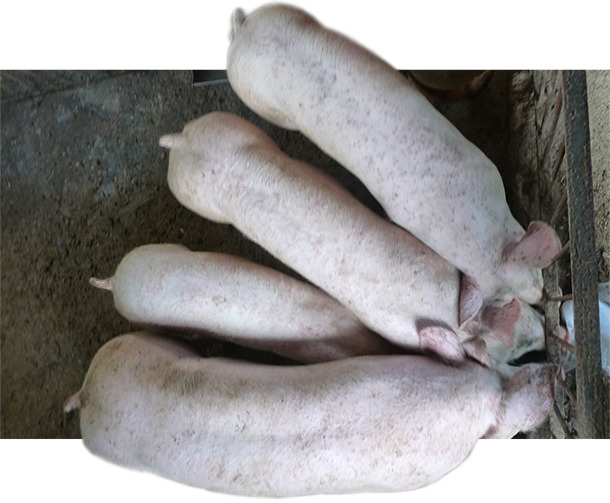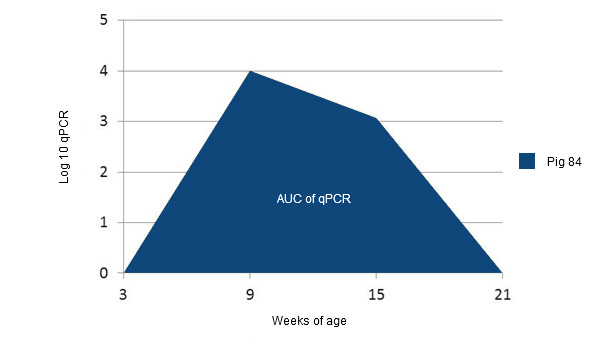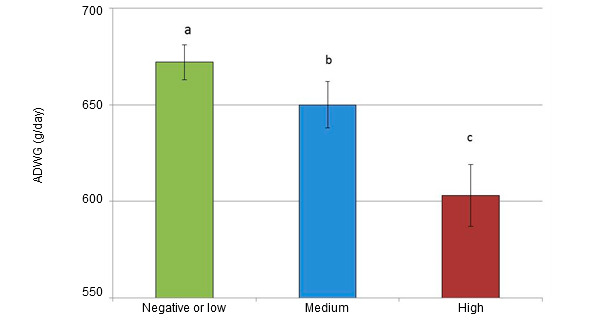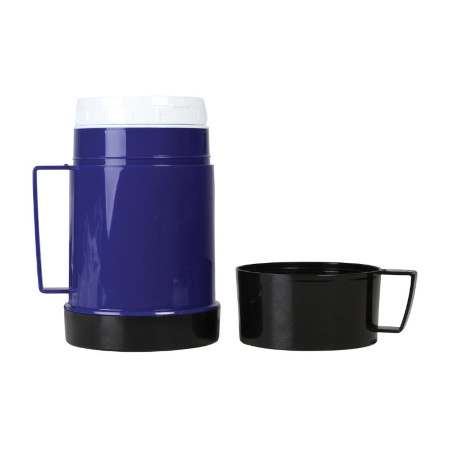The consequences of porcine circovirus type 2 (PCV2) infection dynamics in swine herds may depend on different factors such as virus genotype, transmission route, viral load, moment of infection, presence of certain co-infections, management practices, and the host genetics and its immune system. Specifically, this review will focus on the effect of PCV2 load in serum on average daily weight gain (ADWG) of pigs during the postweaning period.
PCV2 was initially described linked to PCV2-systemic disease (PCV2-SD, formerly known as PMWS: Postweaning Multisystemic Wasting Syndrome). One of the diagnostic criteria to be fulfilled is presence of a moderate to high amount of PCV2 in lymphoid lesions. In consequence, PCV2 load has been pointed out as an estimator of PCV2-SD in several studies (with a diagnostic threshold varying between >104.7 and 107.4 PCV2 genome copies/ml of serum, depending on the laboratory of analysis). Moreover, a PCV2-SD diagnosis approach at a population level was suggested by measuring PCV2 load in serum pools, clinical evaluation and diagnosis of other concomitant diseases at the moment of clinical outbreak. Once PCV2 vaccination was often used, a novel pathological condition linked to PCV2 has been described: PCV2 subclinical infection (PCV2-SI). Such condition represents the most prevalent porcine circovirus disease, since it corresponds to infected pigs with low-to-moderate PCV2 amounts and without evident clinical signs, but experiencing growth retardation which is not usually observable by the naked eye. A characteristic sign in both conditions (PCV2-SD and PCV2-SI) is reduction of ADWG in the postweaning period; however, they course with different severity suggests that PCV2 load may influence the degree of clinical outcome.


Image 1. It is usual to find pigs with heterogeneous weights in farms affected by PCV2-SD and PCV2-SI. One of the factors that contributes to such situation Is the different PCV2 load in serum experienced by each pig during the postweaning period
In order to illustrate the effect of PCV2 load on ADWG, results from a study conducted in the field are herein presented and discussed. Such study aimed to assess whether the PCV2 systemic infection, in terms of viraemia length and amount, produced a load-dependent effect on ADWG from 3 (weaning) to 21 weeks of age (slaughter). For this purpose, a study was conducted in two PCV2 non-vaccinating farms with cases of PCV2-SD and PCV2-SI. The study design included three different boar lines that were used to inseminate 117 sows from both farms. Then, one or two pigs per sow were selected (60, 61 and 51 piglets from Pietrain, Pietrain x Large White and Duroc x Large White boar lines, respectively). Pigs were bled at 3, 9, 15 and 21 weeks of age to calculate their PCV2 load in serum at each sampling time by means of a quantitative PCR (qPCR). Pigs were weighted at 3 and 21 weeks to calculate the ADWG from weaning to slaughter. A method to measure the length and amount of PCV2 viraemia for each individual is calculating the area under the curve (AUC) drawn below the line that connects each value obtained from the qPCR at each sampling moment (Fig. 1).

Figure 1. Example of calculation of the AUC of PCV2 qPCR for each individual (in this case for pig nº 84).
Then AUC of qPCR was categorized as “negative or low” (for values <104.3 PCV2 genome copies/ml of serum), “medium” (≥104.3 to ≤105.3) and “high” (>105.3). Piglets’ sex, PCV2 antibody titre at weaning and sow parity was also collected and considered for the statistical analysis. A generalized linear model was performed, obtaining that paternal genetic line and AUC of qPCR were related to ADWG. The observed ADWG for each category of AUC of PCR is shown in Figure 2. The estimated ADWG were 76.5 and 43.6 g/day lower for pigs with “high” and “medium” serum PCV2 loads, respectively, than for those with “negative or low” viral load in serum, showing significant differences among them. This scenario would imply a mean loss of 13.1 € and 7.5 €/pig at 21 weeks of age for pigs with “high” and “medium” serum PCV2 load, respectively, compared to those with “negative or low” load (assuming a price of 1.361 €/Kg live pig and a postweaning period of 18 weeks). Furthermore, the coefficient of variation (CV) of ADWG from weaning to slaughter increased with the PCV2 load in serum, being of 11, 13 and 19% in “negative or low”, “medium” and “high” load pigs, respectively.

Figure 2. Observed ADWG (mean ± typical error) for each AUC of PCV2 qPCR category.
*a, b, c indicate statistical differences among experimental groups (p<0.05).
This study describes different ADWG performances in 3 pig populations that suffered from different degrees of PCV2 viraemia, where the higher the PCV2 load in serum from weaning to slaughter, the lower the ADWG. These results support the notion of a gradual clinical (and economical) effect of PCV2 in pig populations, what would explain the benefits of PCV2 vaccination even in farms without PCV2-SD, but suffering from PCV2-SI.








